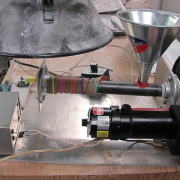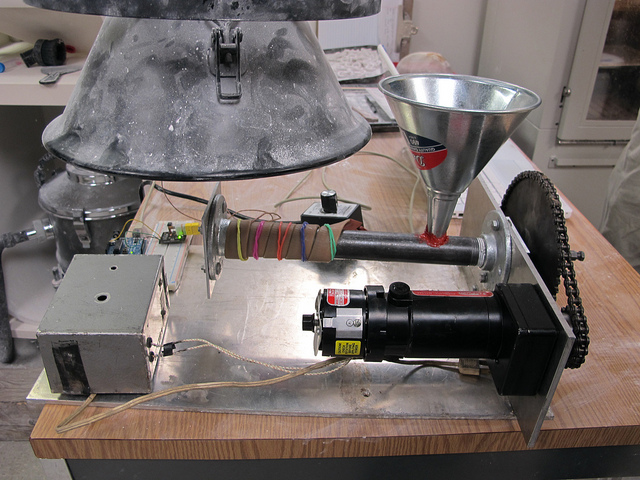3D Printers and DIY Filament Makers
3D printers are everywhere.
Even President Obama said in his speech about the state of the union that 3D printers had the « potential to revolutionize the way we make almost everything ». Their process is really simple, they all make solid objects using an additive process where successive layers of materials are laid down in different shapes as opposed to traditional subtractive machining techniques, which rely on the removal of material by methods such as cutting, grinding or drilling.
But it is safe to ask: are 3D printers at the heart of a new model of sustainable production and consumption, or will simplicity and ubiquity cause us to overprint things, and the technology will be used in non-sustainable ways ? Some claim that thanks to 3D printers we will produce less waste. But this is really use-dependent: if users of the printers run several copies to get the best print and then discard the less satisfactory ones it is not the case. Printers are also supposed to be energy-efficient, but this depend really on the kind of printer.One of the main claim for the use of 3D printers is that they can reduce energy-use and associated emissions in transportation compared to providing the same products through conventional manufacturing. Their recycling performances are also largely dependent on users. But many companies are already offering recycle services. Another advantage of 3D printers is that they offer us the ability to use cleaner materials
But what could be a really interesting development amongst the 3D printing world is the creation of DIY Filament maker and extruder. RecycleBots are open source supply of 3D printing materials by using recycled materials. It consist in open-source hardware devices A RecycleBot is an open-source for converting waste plastic into filament for open-source 3D printers. The Filabot Wee, for instance, is designed to use as few parts as possible, while still making quality filament quickly, for 3D printers The plans are freely available so that everyone can build their own. The machine can also be bought in kit.
Other initiatives exist such as Dave Hakkens’ Precious Plastic project. The Dutch designer started from the observation that plastic is a great material: it is lightweight, strong, easy to shape and great to recycle. But it is rarely recycled, and seen as a disposable and worthless material. He developed a series of machines to set up a small scale plastic workshop.The goal is for people to bring old plastic to workshops and make new products out of it, this would then allow to produce plastic locally. His whole project is documented on his website. At the end, the blueprints are going to be made available to everyone for free.
Useful links to go further.
- http://www.davehakkens.nl/work_preciousplastic.html
- http://www.preciousplastic.com/alex-his-project/
- http://www.treehugger.com/clean-technology/digital-fabrication-and-3d-printing-sustainable.html
- http://www.lowtechmagazine.com/2014/03/how-sustainable-is-digital-fabrication.html


